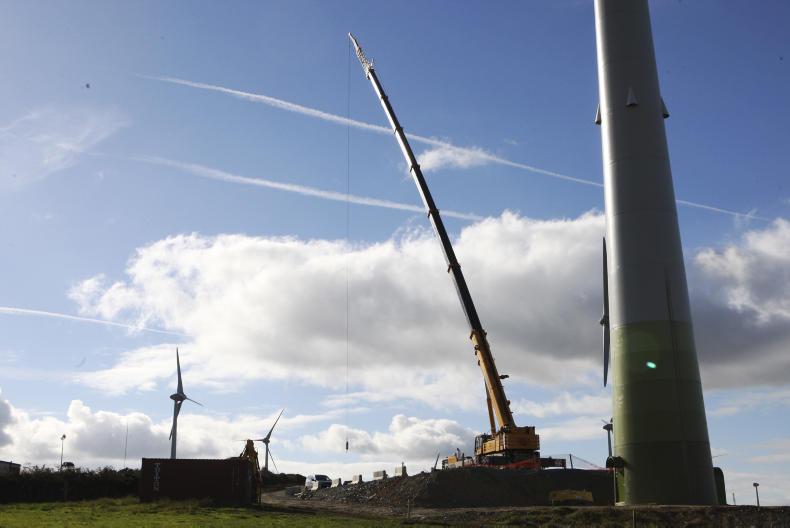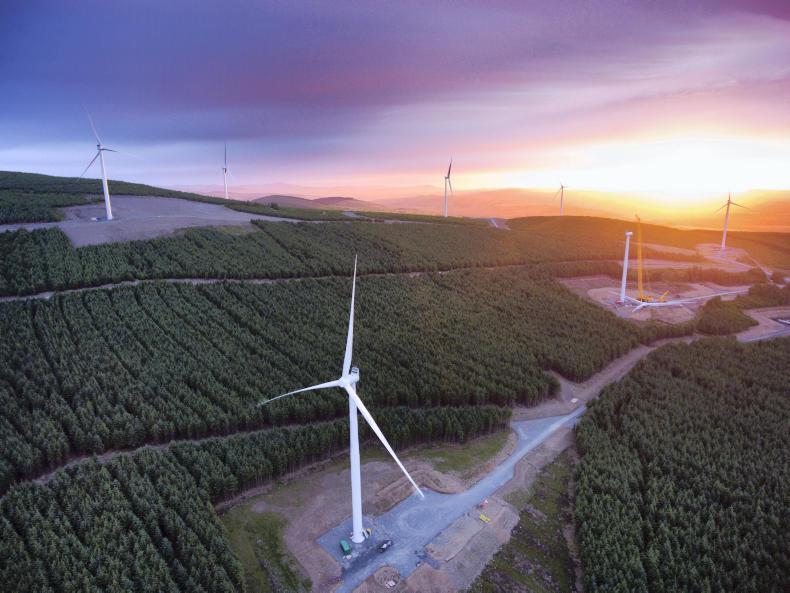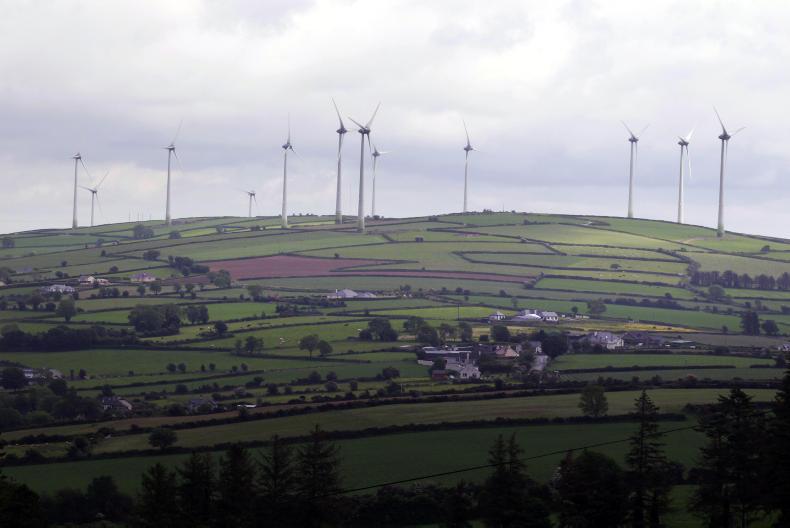Wind energy is still the cheapest form of renewable energy when completed at scale in Ireland.
As all farmers know, Ireland has a huge wind resource and harnessing this natural power is a sustainable and economically viable opportunity. However, there are a number of constraints:
The laws of mathematics and physics: the higher the turbine, the higher the wind speed, and as power is proportional to the cube of the wind speed, this really matters to the economics of a turbine. In addition, the larger the turbine blade, the larger the swept area to catch the wind (area is square relationship to blade length) the lower the cost of energy produced per euro invested.Wind energy has received significant negative press in the last number of years with fears surrounding noise and visual acceptance being the two key drivers. The Irish grid is congested and has been heavily speculated upon for the construction of wind farms.Where does this leave farmers with respect to wind energy? There is certainly a reluctance for people to join the grid queue of some 20,000MW of wind energy that is currently sitting on the lists, most of which will not be developed.
However, there are a number of upcoming options that may enhance the economics for individuals.
Small scale
Smaller-scale wind energy has been slow to take off. This is essentially a function of cost of machine versus energy yield. The current largest deployed wind turbines for offshore energy are 8,000kW and approaching 250m to blade tip.
The cost of producing energy from these very large devices is almost an order of magnitude lower than a 12kW small turbine.
So for farmers to take advantage of wind energy, the machine needs to be sufficiently large to capture real power and sufficiently small to stay out of the congested grid.

The 50kW to 500kW scale, with the right supports, could be ideal for farmers to use. The cost of batteries has plummeted, allowing the energy to be used when the wind is not blowing as hard.
The electrification of heat via heat pumps for the buildings and hot water production, in addition to the emerging electrification of transport and tools, could make an economic case for smaller-scale turbines to become the norm for larger farms and agricultural facilities.
The second opportunity for rural investment in wind energy is the potential for community-owned and co-owned wind energy development.
Future support schemes
The Department of Energy has noted that future renewable electricity support schemes would be contingent on enabling locals to invest in local projects.
This could allow a number of local farmers and others adjacent to large developments take advantage of the larger size and economies of scale without having to develop and construct their own turbine on their own land.
Public consultation on this scheme is due in August and would be of primary benefit to rural dwellers, especially ones in upland areas where wind farms are traditionally built.

At Energy in Agriculture 2017, we will demonstrate Gurteen Agricultural College’s 50kW wind turbine.
In addition, we will have representatives from small-scale turbine manufacturers and farmers who have developed their own larger-scale wind farm.
A discussion on planning and grid connection will also be part of the demonstration, with the latest news from the emerging support schemes to be discussed.
Wind energy is still the cheapest form of renewable energy when completed at scale in Ireland.
As all farmers know, Ireland has a huge wind resource and harnessing this natural power is a sustainable and economically viable opportunity. However, there are a number of constraints:
The laws of mathematics and physics: the higher the turbine, the higher the wind speed, and as power is proportional to the cube of the wind speed, this really matters to the economics of a turbine. In addition, the larger the turbine blade, the larger the swept area to catch the wind (area is square relationship to blade length) the lower the cost of energy produced per euro invested.Wind energy has received significant negative press in the last number of years with fears surrounding noise and visual acceptance being the two key drivers. The Irish grid is congested and has been heavily speculated upon for the construction of wind farms.Where does this leave farmers with respect to wind energy? There is certainly a reluctance for people to join the grid queue of some 20,000MW of wind energy that is currently sitting on the lists, most of which will not be developed.
However, there are a number of upcoming options that may enhance the economics for individuals.
Small scale
Smaller-scale wind energy has been slow to take off. This is essentially a function of cost of machine versus energy yield. The current largest deployed wind turbines for offshore energy are 8,000kW and approaching 250m to blade tip.
The cost of producing energy from these very large devices is almost an order of magnitude lower than a 12kW small turbine.
So for farmers to take advantage of wind energy, the machine needs to be sufficiently large to capture real power and sufficiently small to stay out of the congested grid.

The 50kW to 500kW scale, with the right supports, could be ideal for farmers to use. The cost of batteries has plummeted, allowing the energy to be used when the wind is not blowing as hard.
The electrification of heat via heat pumps for the buildings and hot water production, in addition to the emerging electrification of transport and tools, could make an economic case for smaller-scale turbines to become the norm for larger farms and agricultural facilities.
The second opportunity for rural investment in wind energy is the potential for community-owned and co-owned wind energy development.
Future support schemes
The Department of Energy has noted that future renewable electricity support schemes would be contingent on enabling locals to invest in local projects.
This could allow a number of local farmers and others adjacent to large developments take advantage of the larger size and economies of scale without having to develop and construct their own turbine on their own land.
Public consultation on this scheme is due in August and would be of primary benefit to rural dwellers, especially ones in upland areas where wind farms are traditionally built.

At Energy in Agriculture 2017, we will demonstrate Gurteen Agricultural College’s 50kW wind turbine.
In addition, we will have representatives from small-scale turbine manufacturers and farmers who have developed their own larger-scale wind farm.
A discussion on planning and grid connection will also be part of the demonstration, with the latest news from the emerging support schemes to be discussed.








 This is a subscriber-only article
This is a subscriber-only article












SHARING OPTIONS: